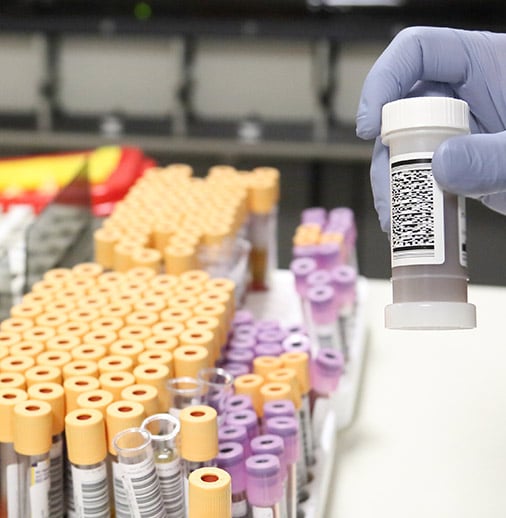The Silent Warriors of the Immune System
Antibodies are the unsung heroes of our biological defenses, tiny sentinels that patrol the body, identifying and neutralizing invaders with uncanny precision. These proteins, born from the intricate dance of immune cells, have long fascinated scientists, who harness their power for medicine, research, and beyond. Polyclonal Antibody Production offers a broad-spectrum shield, while Llama Monoclonal Antibody Production crafts a sharper, more singular blade. Together, they represent a frontier where nature’s ingenuity meets human curiosity, forging tools that heal and reveal.
The allure of antibodies lies in their adaptability. They can tag a virus for destruction, illuminate a protein under a microscope, or even guide a drug to its target. In labs across the world, these molecular marvels are sculpted to serve, their creation a blend of art and science that taps into the vast potential of living systems. From sprawling fields to sterile benches, the journey of antibody production is a testament to life’s resilience—and our ability to wield it.
Polyclonal Antibody Production: A Chorus of Defenders
The process of Polyclonal Antibody Production is like assembling a choir—diverse voices united in a common song. It begins with an animal—often a rabbit, goat, or sheep—injected with an antigen, a fragment of the enemy to be fought. The immune system responds with gusto, churning out a medley of antibodies, each slightly different, yet all tuned to the same target. These are harvested from the blood, a rich broth of immunity ready to tackle a range of threats.
The strength of this method is its breadth. Because the antibodies come from multiple immune cells, they recognize various parts of the antigen, making them versatile warriors. In research, they light up complex proteins with a glow that reveals their shape; in diagnostics, they sniff out diseases with a tenacity that rivals a bloodhound. It’s a robust, time-tested craft, where the cacophony of responses becomes a harmonious shield, broad and unyielding against the chaos of biology.
Llama Monoclonal Antibody Production: Precision from the Highlands
In contrast, Llama Monoclonal Antibody Production is a sculptor’s chisel, carving a single, exquisite form from the raw stone of immunity. Llamas, those gentle giants of the Andes, bring a unique gift to the table—their antibodies are smaller, simpler, yet fiercely effective. Unlike the sprawling complexity of traditional antibodies, these “nanobodies” are streamlined, born from a single immune cell lineage, offering a precision that’s almost surgical.
The journey starts much like its polyclonal cousin—an antigen sparks the llama’s immune response. But here, the magic diverges. Scientists isolate a specific antibody-producing cell, cloning it to produce a uniform army, each soldier identical and honed to a single mission. These nanobodies slip into crevices other antibodies can’t reach, binding with a tenacity that makes them stars in cutting-edge therapies—think cancer drugs that slip past defenses or sensors that detect the faintest whisper of a virus. It’s a craft of focus, where less becomes more, and simplicity reigns supreme.
A Dance of Diversity and Unity
The interplay between Polyclonal Antibody Production and Llama Monoclonal Antibody Production is a ballet of contrasts. The former casts a wide net, its diversity a strength in battling multifaceted foes—think of it as a sweeping landscape, alive with variation. The latter zooms in, its singularity a laser that pierces the smallest targets—a pinpoint of light in the dark. Together, they offer a toolkit as vast as nature itself, each method complementing the other’s reach.
This synergy shines in application. A researcher might use polyclonal antibodies to map a protein’s sprawling surface, then turn to llama nanobodies to probe its hidden nooks. In medicine, one might screen for a disease with the broad sweep of polyclonals, while the other delivers a tailored strike to halt it. It’s a partnership that mirrors the immune system’s own duality—broad vigilance paired with precise retaliation—crafted in labs where human hands guide nature’s handiwork.
The Craft of Creation
The making of these antibodies is a labor of patience and skill. Polyclonal production demands careful antigen design, ensuring the immune response sings with variety, followed by purification that sifts gold from the serum’s dross. Llama monoclonal work is a finer thread—cells are teased apart, their secrets cloned in a delicate ballet of molecular biology, yielding a harvest of uniformity. Both require sterile precision, ethical care for the animals, and a deep respect for the biology at play.
The process is alive with possibility. Advances tweak the antigens, refine the cloning, and push the boundaries of what antibodies can do. In one lab, a polyclonal batch might glow under a microscope; in another, a nanobody slips into a tumor’s core. It’s a craft that evolves with every discovery, a bridge between the chaos of life and the order of science, built one antibody at a time.
